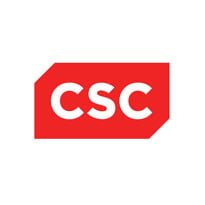The Department of Health appears to have signed off the deployment verification criteria for three of the early adopters of Lorenzo in the North, Midlands and East.
In a call with investors to discuss CSC’s 2013 Q1 results, Michael Lawrie, the company’s president and chief executive, said the company had made “good progress” with the electronic patient record system, and “achieved a key milestone” with the software.
He said the company had “delivered this new software to three trusts in the United Kingdom and that as a result of achieving this milestone the NHS has agreed to pay us for that milestone.”
CSC has not deployed Lorenzo to three new trusts in the past quarter. Therefore, eHealth Insider understands that Lawrie was referring to the DH signing off on three early adopters.
There have been four, key early adopters of Lorenzo: NHS Bury, University Hospitals of Morecambe Bay NHS Foundation Trust, Birmingham Women’s NHS Foundation Trust, and Humber NHS Foundation Trust. However, the last trust only went live at the end of May.
If the deployment verification criteria have been signed by the DH, it could well be a key milestone for the company’s talks with the Department about a new local service provider deal for the NME, which have now dragged on for around two years.
The latest ‘standstill’ agreement between the company and the Department runs out on 31 August. The DH refused to confirm the sign off, saying the ongoing contract negotiations meant it could not comment.
In his call, Lawrie said he was confident of securing a new deal. “We are, I think, pretty close to getting towards a tenant agreement with the NHS.
“Once that gets done, we still have to have the government approval. And let me be clear, we do not have any approval at that level.
“But we’ve been working very, very hard making sure we’ve got definition on what the offering is going to be, the definition on what the pricing for that offering will be.”
Lawrie told investors that the company has done a “lot of work” on the “forward approval process”, so when trusts want approval for projects, such as Lorenzo, “they can be funded by the NHS.”
EHI reported recently that CSC is hoping to secure an agreement that would include 22 Lorenzo deployments in three waves.
The company’s first quarter results indicated early signs of improvement in its financial performance. Revenue figures were up by 1% to around $3.96 billion and CSC also secured new business awards of $4 billion, which was 74% higher than the same period last year.
As reported by EHI in January, the company warned investors that it might have to write off £1 billion already invested in the National Programme for IT in the NHS. Lawrie said it would achieve this “cost take-out plan” over 18 months.
CSC’s announcement stated that the acquisition of iSoft, which developed Lorenzo but also has a huge installed base of patient administration and clinical systems in the NHS, contributed $54m to the company’s revenue in the quarter.
Paul Saleh, CSC’s chief financial officer, said that iSoft had been a “drag” and would remain so in the second quarter, but that the company was hoping for greater profitability from iSoft in the second half of the year.
The potential for job losses has also been mooted previously, but Lawrie said that CSC was reluctant to disband the UK team despite it running as an “expense” to the company.
“Currently, we’ve got about 200 people in the UK that are an expense to us, that we do not have the revenue to offset that expense.
“We have good demand for our iSoft software in other parts of the world. We have been reluctant to disband the UK team until we get to some conclusion [with the DH] because one you disband them you don’t get them back together.”

